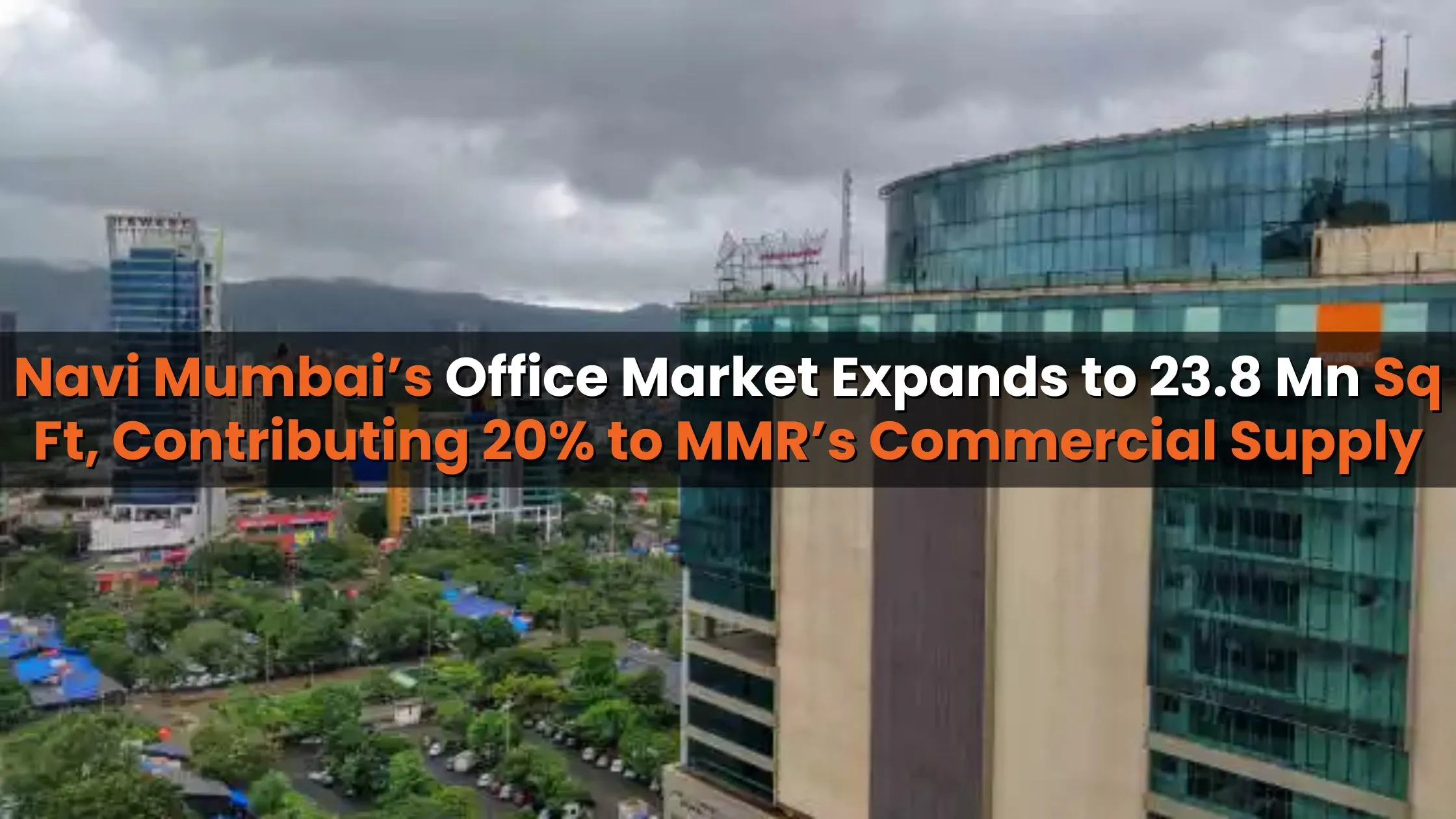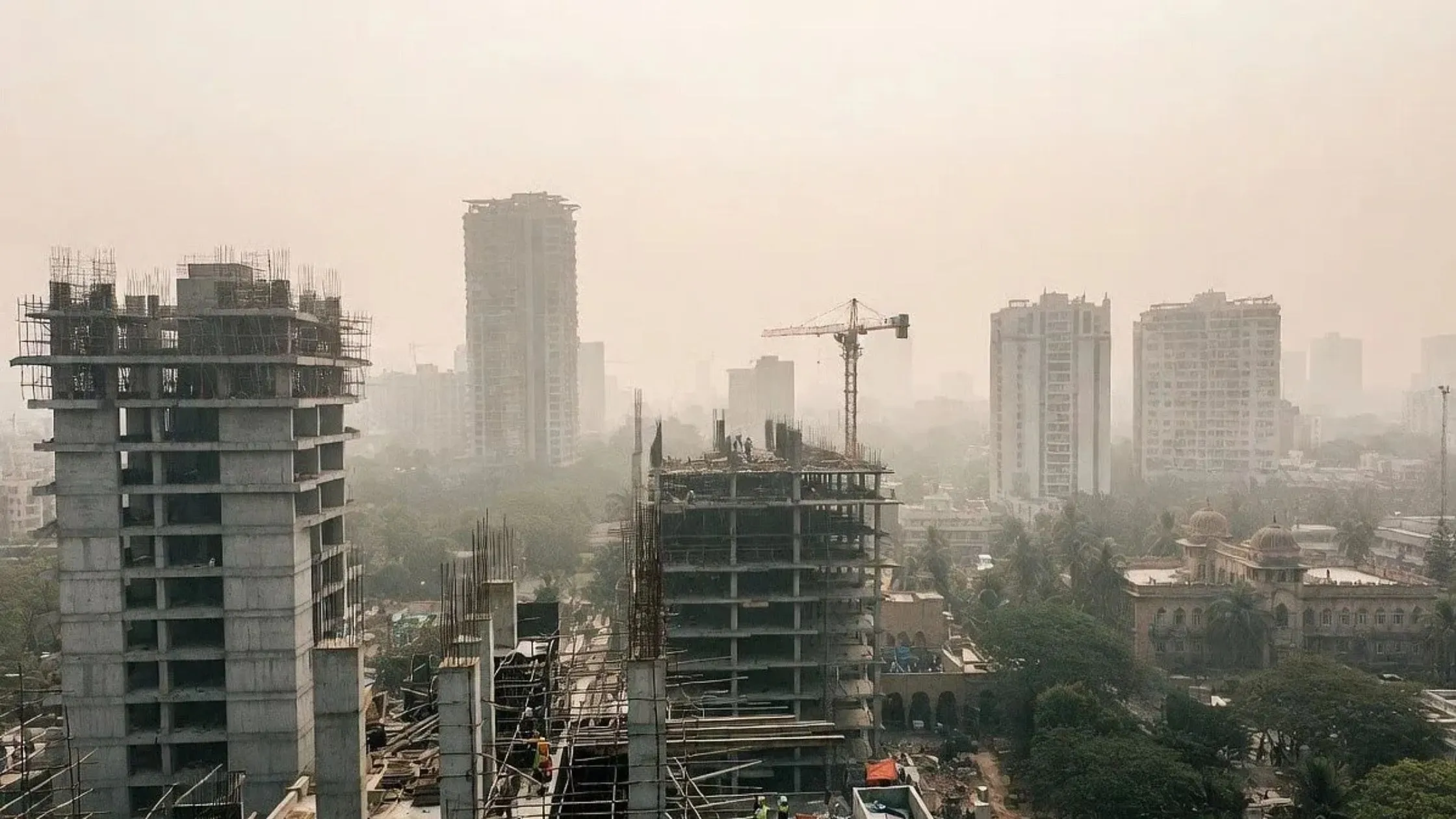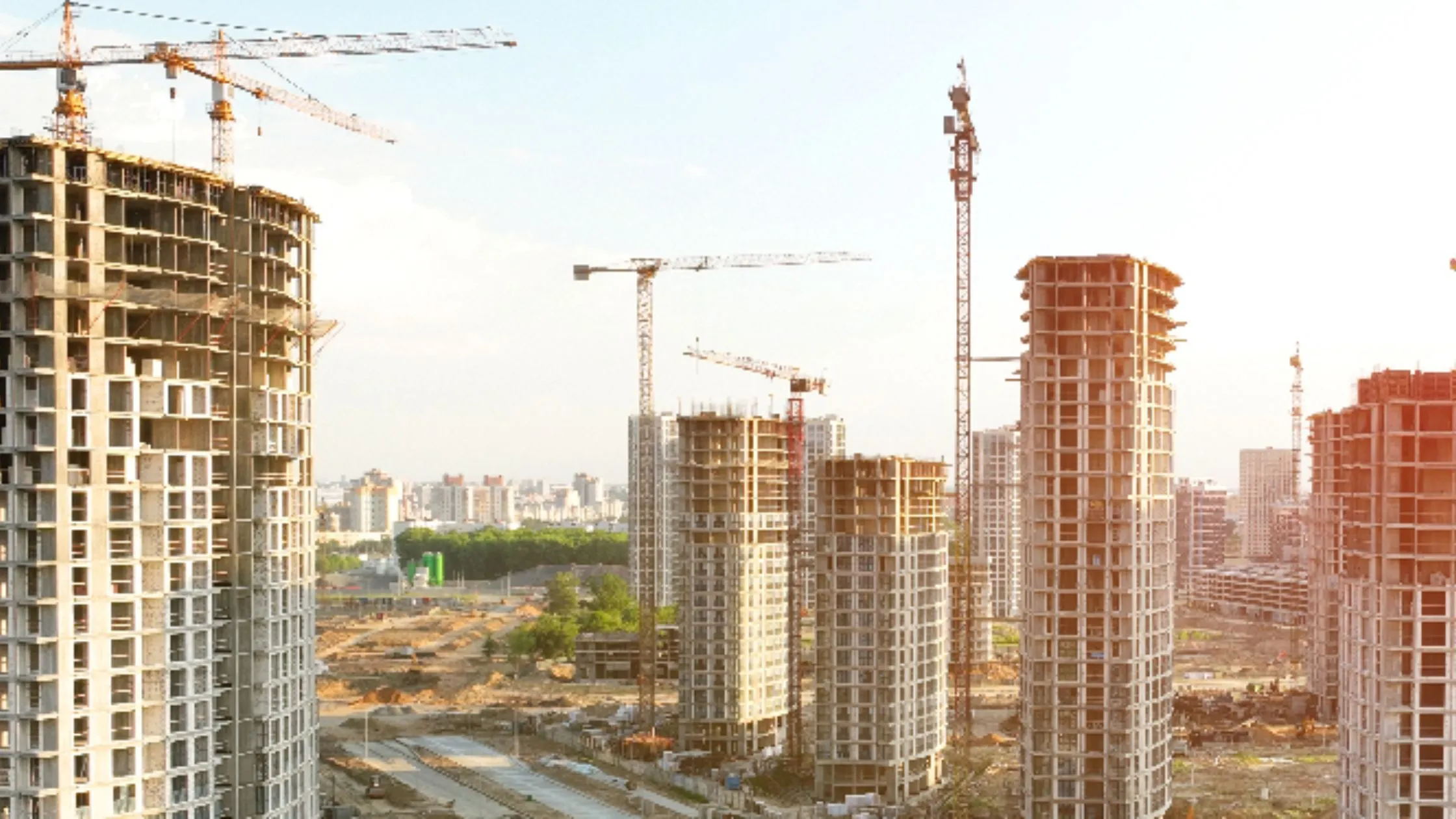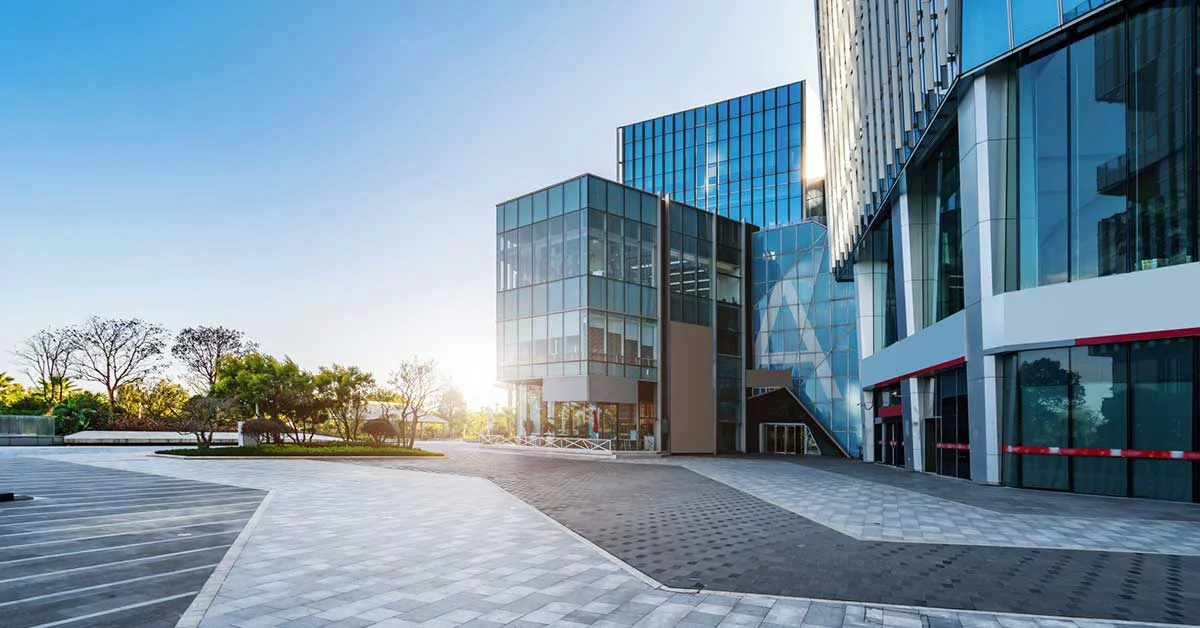Table of Content
Over the years, Navi Mumbai has evolved from being seen as Mumbai’s satellite town into a powerful commercial hub in its own right. A recent analysis by Cushman & Wakefield highlights that Navi Mumbai emerges as major office hub with 23.8 million sq ft of Grade A office space, making up nearly one-fifth of MMR’s total supply of 120 million sq ft. Supported by high occupancy, competitive rentals, and continuous infrastructure investments, the region is steadily becoming a go-to choice for multinational corporations and Global Capability Centers (GCCs).
Current Office Market in Navi Mumbai
Today, Navi Mumbai’s office market is defined by both scale and stability. The city currently offers 23.8 million sq ft of Grade A stock, contributing significantly to the region’s overall commercial footprint. Demand remains healthy, reflected in an 87% occupancy rate, which shows strong corporate confidence in the location.
Many companies, both Indian and global, have established their bases here to take advantage of its lower operating costs and well-planned business environment. This shift underlines Navi Mumbai’s transition into an integral part of MMR’s office ecosystem.
Also Read: Haryana Abolishes Stamp Duty on Purchase of 50 sq yards, 100 sq yards Plots
Cost Advantage and Rentals
Among the biggest reasons for this rising demand is Navi Mumbai’s rental advantage. The market average is about ₹70 per sq ft per month, which is close to 60% cheaper than prime business districts like BKC or Lower Parel.
For GCCs and IT/ITeS companies that need larger spaces, this price point offers tremendous savings without compromising on infrastructure quality. As a result, Navi Mumbai has emerged as one of the most cost-effective office markets, blending affordability with premium standards.
Talent Pool and Workforce Availability
Real estate growth is only sustainable when supported by a strong workforce, and Navi Mumbai is well-placed in this regard. The region benefits from its closeness to reputed colleges and professional institutes, producing nearly 150,000 graduates annually.
This steady flow of skilled professionals ensures that companies can build teams locally, reducing reliance on relocation. For sectors like IT, BFSI, and services, this talent pipeline is an added incentive to establish operations here.
Infrastructure and Connectivity Boost
One of Navi Mumbai’s strongest advantages lies in its urban infrastructure and connectivity. Businesses here benefit from state-of-the-art office complexes, reliable utilities, and residential choices ranging from affordable housing to luxury living.
Several large-scale infrastructure projects are also underway, set to transform connectivity further:
- Navi Mumbai International Airport – targeted to start operations by late 2025 with a capacity of 20 million passengers annually.
- Kharghar–Turbhe Tunnel – designed to improve east-west mobility across the city.
- Palm Beach Road Extension – easing travel and expanding accessibility to key office clusters.
Together, these projects reinforce Navi Mumbai’s image as a well-integrated and future-ready business hub.
Role of Global Capability Centers (GCCs)
The GCC sector is expanding its footprint across India, with its share in office leasing projected to increase from 23% in 2023 to 29% by 2025. Navi Mumbai has become a favored choice due to its ability to meet the three primary needs of GCCs talent access, cost-effective Grade A spaces, and reliable infrastructure.
In a survey referenced by Cushman & Wakefield, 91% of respondents valued talent availability, 77% pointed to affordability, and 73% highlighted infrastructure as the top factors guiding their decisions. Navi Mumbai satisfies all three, making it one of the fastest-growing hubs for multinational GCCs.
Developer and Investor Interest
Confidence among developers remains high, with 4 million sq ft of new Grade A supply expected by FY2028. This steady pipeline demonstrates that Navi Mumbai is not a short-term story but a long-term growth market.
For investors, the combination of high occupancy, stable rentals, and infrastructure-led expansion creates a highly attractive proposition. The city’s ability to absorb large-scale demand makes it a key driver of MMR’s future office growth.
Also Read: Ashiana Housing Acquires 23 Acres of Land in Chennai, Eyes ₹1,200 Crore Revenue
Conclusion
With affordability, talent, and connectivity working in its favor, it’s clear that Navi Mumbai emerges as major office hub within MMR’s real estate landscape. Already contributing 20% of the region’s Grade A stock, Navi Mumbai is positioned to accelerate further with the launch of its international airport and other mega infrastructure upgrades.
Corporates, GCCs, and developers are increasingly recognizing the city’s scalability and cost advantages. As Mumbai’s development push continues to unlock new corridors, Navi Mumbai is set to remain a critical growth engine, combining world-class office spaces with unmatched value.




_1766473246.webp)


Ans 1. Navi Mumbai has 23.8 million sq ft of Grade A office space, making up nearly 20% of the Mumbai Metropolitan Region’s (MMR) 120 million sq ft total supply.
Ans 2. The city’s Grade A office spaces enjoy an 87% occupancy rate, showing strong and consistent demand from corporates.
Ans 3. Lower rentals (₹70/sq ft/month, nearly 60% cheaper than BKC or Lower Parel), high-quality infrastructure, and access to talent make it a cost-effective and attractive alternative.
Ans 4. Around 150,000 graduates enter the workforce annually from nearby institutes, ensuring a steady talent pool for IT, BFSI, and service companies.
Ans 5. Key projects include the upcoming Navi Mumbai International Airport (operational by late 2025), the Kharghar–Turbhe Tunnel, and the Palm Beach Road Extension, all of which will boost connectivity and ease of business.
Ans 6. It meets the top needs of GCCs—skilled talent, affordable Grade A spaces, and reliable infrastructure. This has made it a preferred location as GCC leasing share rises nationwide.
Ans 7. About 4 million sq ft of new Grade A supply is expected by FY2028, reflecting strong developer and investor confidence.
Ans 8. While offering the same Grade A standards, Navi Mumbai is much cheaper, less congested, and better planned making it especially attractive for large-scale occupiers.